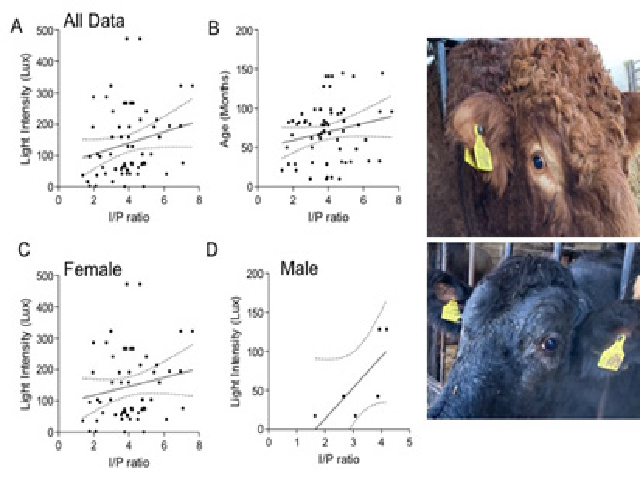Influence of Ambient Day Light Variations and Age on the Iris-pupillary Area Ratio in Beef Cattle
DOI:
https://doi.org/10.5530/bems.9.1.3Keywords:
Iris-pupillary ratio, Sympathetic activity, Autonomic nervous system, Stress, Animal welfare, Digital imaging.Abstract
Introduction: Iris-pupillary area ratio (IPR) is an objective and non-invasive index of autonomic nervous system activity and stress, which can be confounded by light intensity or age of an individual. Evaluating the influence of ambient light intensity variations or age on IPR is necessary to improve the validity of IPR for its clinical application in objective assessment of welfare and stress. Materials and Methods: In this study we evaluated the influence of ambient light intensity variations and age on IPR in beef cattle breeds (Limousin, Belgian Blue and Charolais) and analysed the data using correlation statistics. Results: The correlation between the light intensity (20 to 500 lux; r = 0.22, p = 0.08) or age (10 to 145 months, r = 0.20, p = 0.12) and IPR was weak and statistically not significant. A sub-group analysis assessing the influence of gender on correlation between the light intensity and IPR also was not statistically significant. Conclusion: Our results suggest that within the ambient light intensity (20 to 500 lux) and age (10 to 145 months) the variation in IPR is minimal. Hence our results validate the merit of IPR in objectively measuring autonomic activity/stress and demonstrate the practicality of using IPR for welfare assessment under ambient light conditions in wider age cohorts of beef cattle.

Downloads
Published
How to Cite
Issue
Section
License
Copyright (c) 2023 Biology, Engineering, Medicine and Science Reports

This work is licensed under a Creative Commons Attribution-NonCommercial-NoDerivatives 4.0 International License.









